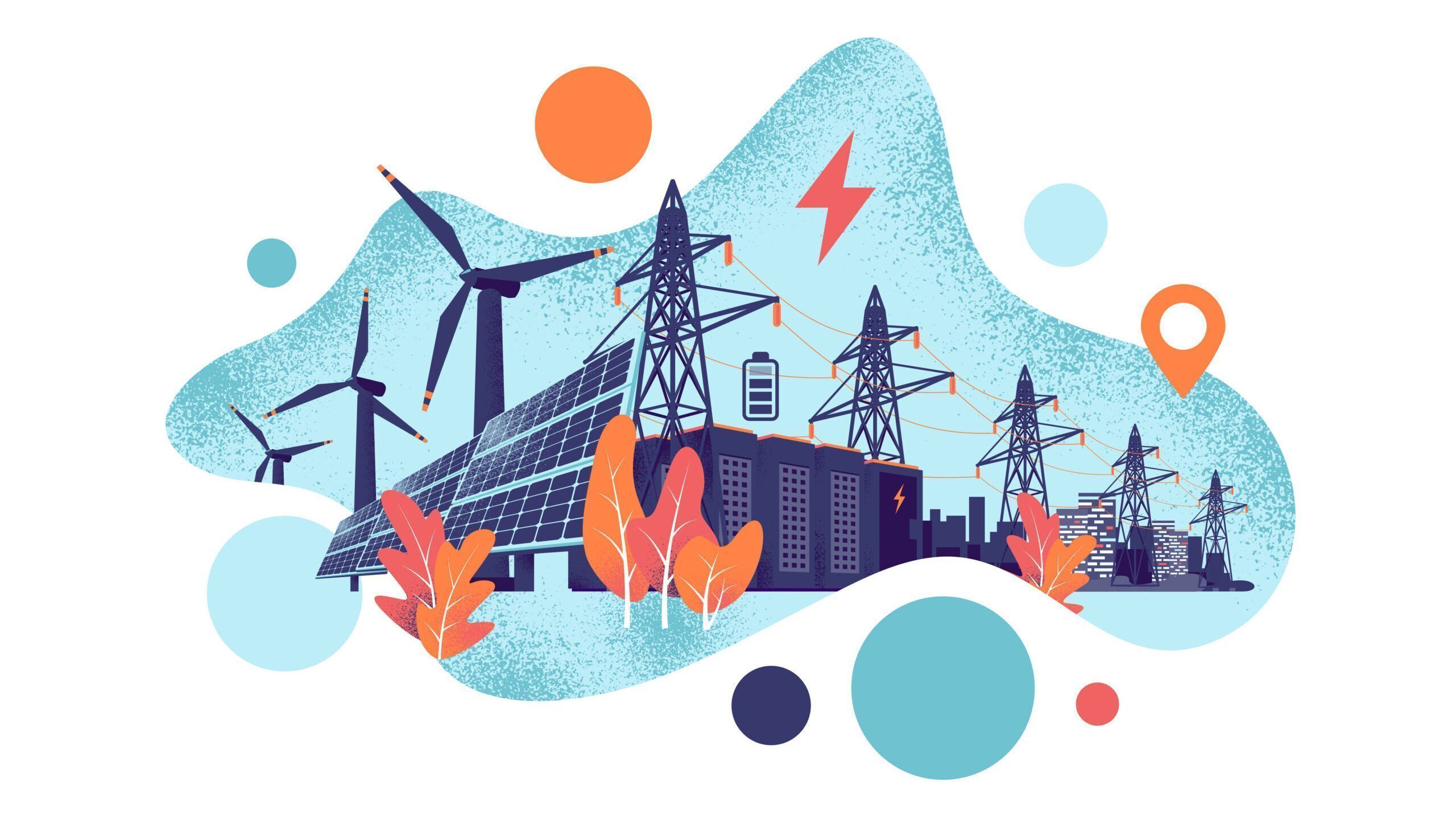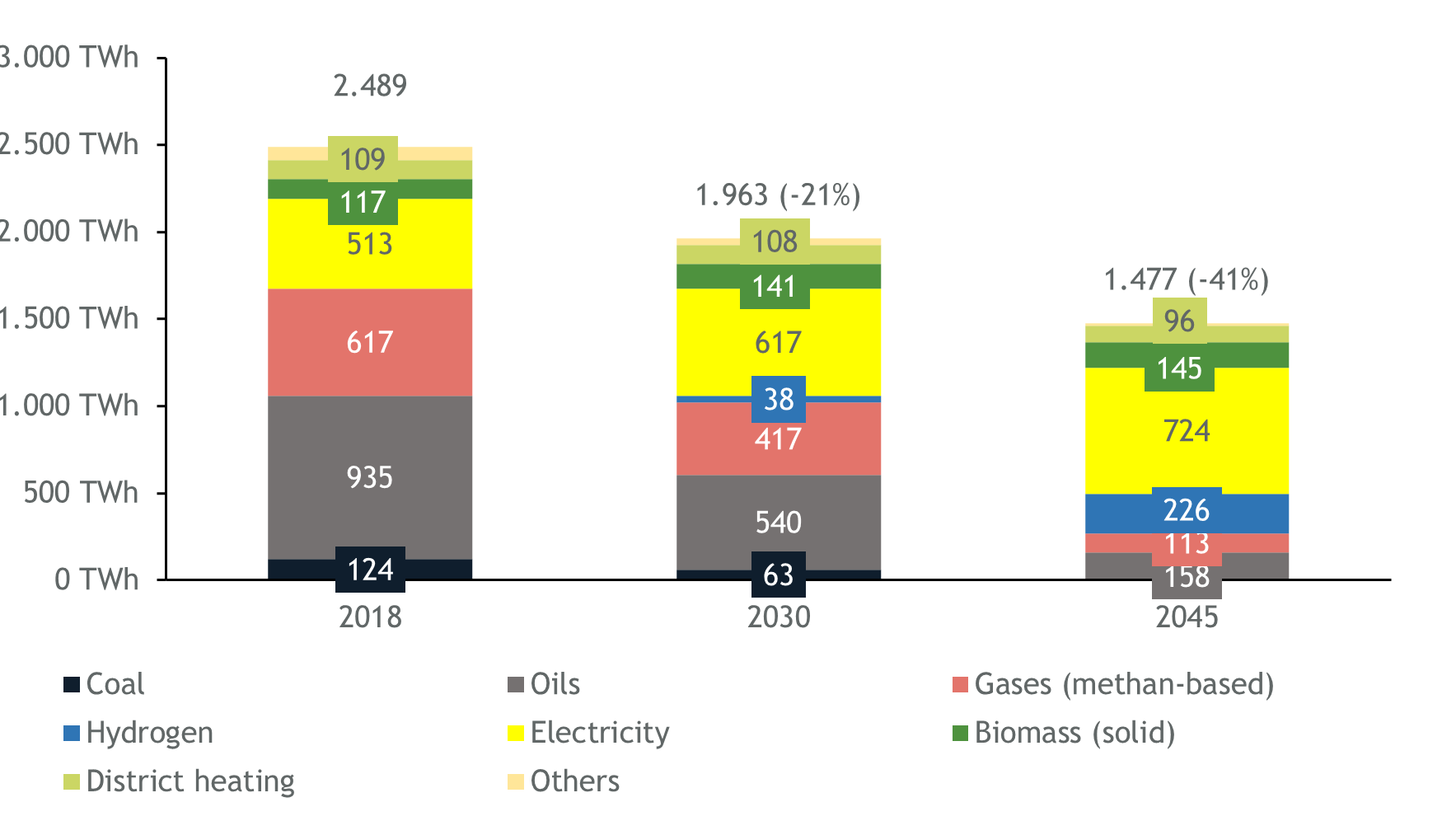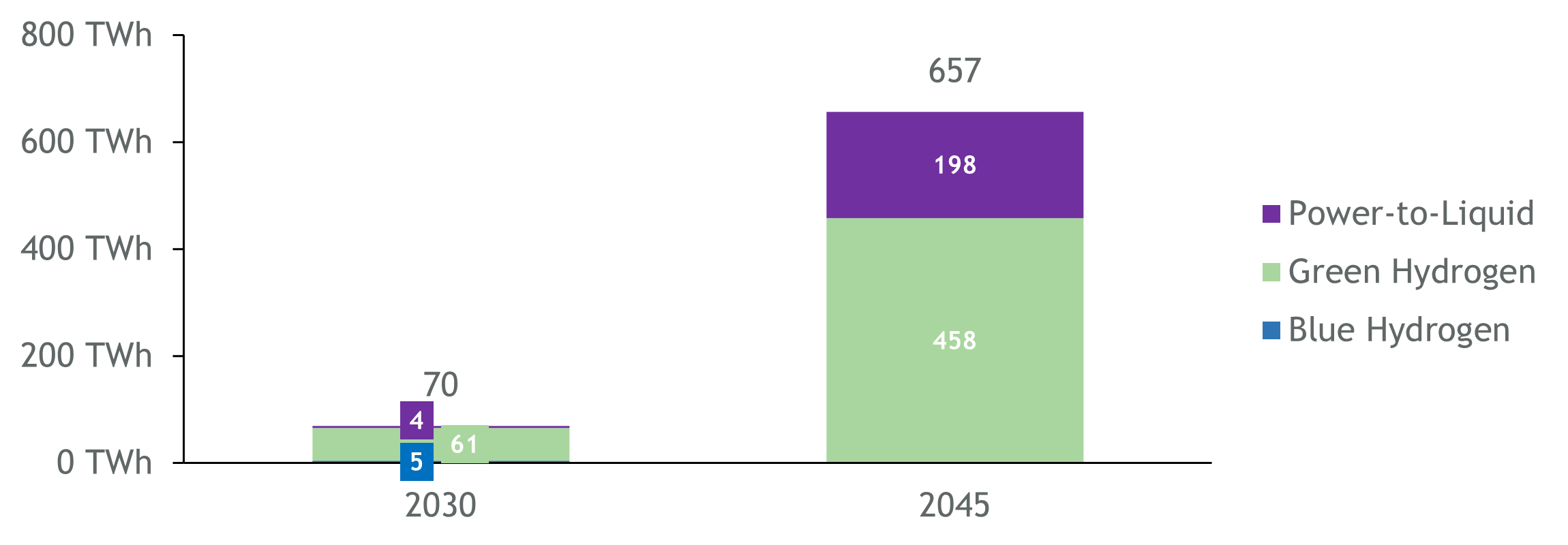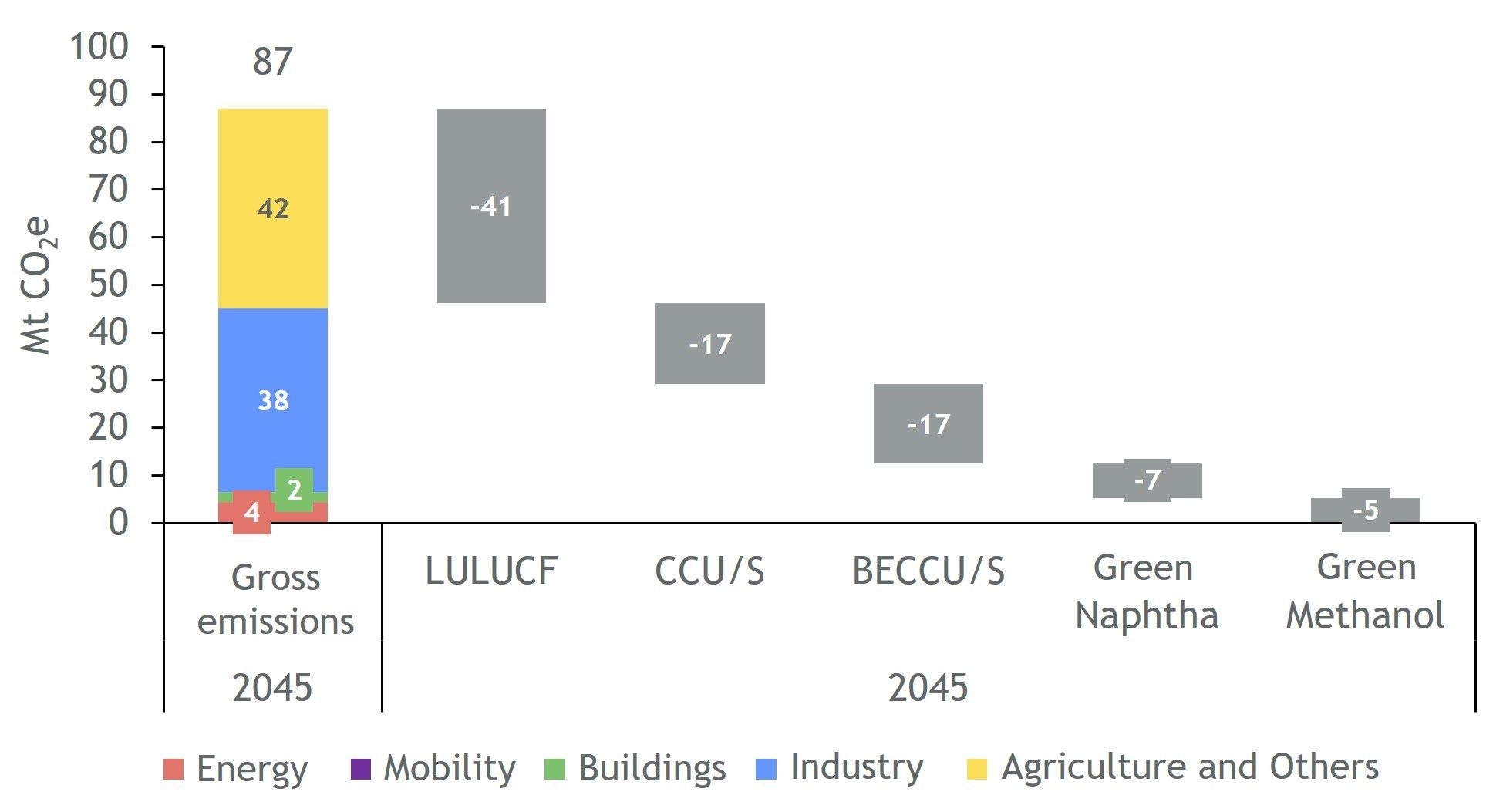
To achieve climate neutrality by 2045, a comprehensive transformation of the energy system in Germany is necessary. The Institute of Energy Economics at the University of Cologne (EWI) has examined what this could look like in its expert report “Climate Neutrality 2045 – Transformation of the Consumption Sectors and the Energy System” as part of the “dena-Leitstudie Aufbruch Klimaneutralität”. The scenario describes a consistent path to achieving the German climate targets within the model boundaries and is based on the Climate Protection Act 2021. In addition to sector-specific climate targets for 2030, the scenario also considers the cross-sectoral reduction targets in subsequent years. In addition to the main scenario, four sensitivities are analyzed.
In the scenario, final energy consumption decreases by around 41 percent by 2045 compared with 2018 – due to innovative technologies, energy efficiency, and changes in mobility behavior. Natural gas, oil, and coal are replaced by electricity and hydrogen. “After 2030, electricity is the most important final energy carrier. In the scenario, gross electricity demand rises to 698 TWh by 2030 and 910 TWh by 2045,” says EWI manager Dr. Johannes Wagner. By 2030, electricity generation from renewables roughly doubles and reaches a share of 68 percent of gross electricity demand. The politically agreed phase-out of coal is accelerated based on market signals. In addition to electricity, hydrogen and hydrogen derivatives such as synthetic kerosene will play a key role in the long term.

“In the transport sector, domestic flights and car traffic are partly shifted to more environmentally friendly buses and trains, and the share of electric vehicles increases significantly,” says EWI manager Max Gierkink. “In the scenario, there are about 14 million electric cars on German roads by 2030 and about 35 million by 2045.” In heavy-duty transport, hydrogen is increasingly used from 2030.
In industry, innovative process technologies such as hydrogen-based direct reduction in the steel industry lower emissions. Efficiency improvements reduce final energy consumption across all sectors. Electricity-based technologies for process heat or innovative production processes, for example in the chemical industry, reduce the use of fossil fuels.
In the buildings sector, the energy refurbishment rate doubles to 1.9 percent per year in the scenario. Inefficient heating systems are gradually replaced. In 2030, approximately 4.1 million electric heat pumps are installed in residential buildings, and approximately 9 million in 2045. Hydrogen is used in the building sector from 2030, initially as part of blending into the distribution grid. By 2045, consumption increases to 79 TWh, primarily as direct demand from hydrogen-capable gas heaters.
Renewable electricity generation doubles to about 475 TWh in 2030, reaching 68 percent of gross electricity demand. Due to a market-driven acceleration of the coal phase-out, 8 GW of hard coal and 4 GW of lignite are still in operation in 2030. In the scenario, approximately 15 GW of gas-fired power plant capacity need to be added by 2030. Gas-fired power plants increasingly assume a backup function. From 2040, hydrogen is used predominantly in these power plants. Due to the decline in conventional electricity generation, Germany will change from a net electricity exporter to a net electricity importer from 2030.

Hydrogen and synthetic power-to-liquid (PtL) enable emission reductions, especially in applications that cannot be electrified at all or only at high costs. This applies, for example, to the provision of high-temperature heat in industrial processes or heavy-load or air traffic.
In this scenario, a rapidly growing hydrogen economy is already developing in the 2020s. In 2030, 66 TWh of climate-friendly hydrogen will be used. About 10 TWh of green hydrogen are produced in Germany; the rest is imported as blue or green hydrogen from other European countries. In 2045, a total of 458 TWh of green hydrogen will be in demand. Both domestic production and imports increase significantly. In the long term, hydrogen is imported mainly via pipeline from the EU, North Africa, Eastern Europe (Russia and Ukraine), and Turkey.
In addition to hydrogen, Germany will also be dependent on liquid (oil-based) energy carriers in the long term. The most important field of application is the transport sector. In 2030, about 3 TWh of PtL kerosene are used in aviation. Aviation also accounts for the largest share in 2045. In addition, road, rail, and marine transport demand liquid fuels. The industry demands green naphtha for non-energy use. In 2045, approx.198 TWh of PtL energy carriers will be used. Due to comparatively high production costs within Germany and low transport costs, these will be imported from the Middle East, South America, or Australia.

In 2045, around 87 million metric tons of CO2 equivalents remain in the scenario, attributable to agriculture and remaining process emissions in industry, for example. These emissions are offset, for example, by carbon capture and utilization/storage (CCU/S). In combination with the use of biomass, a technical sink (BECCU/S) is created. Natural sinks (e.g., forests or peatlands) can also contribute to achieving the 2045 net carbon neutrality goal. In 2045, total sink capacity amounts to 41 million tons of CO2.